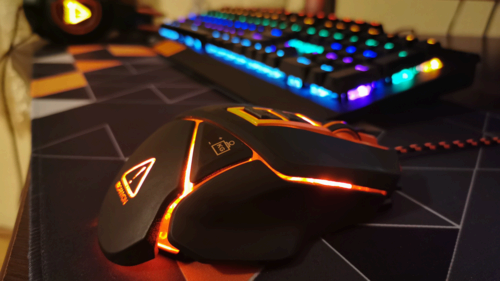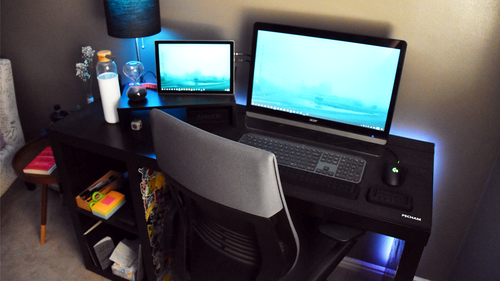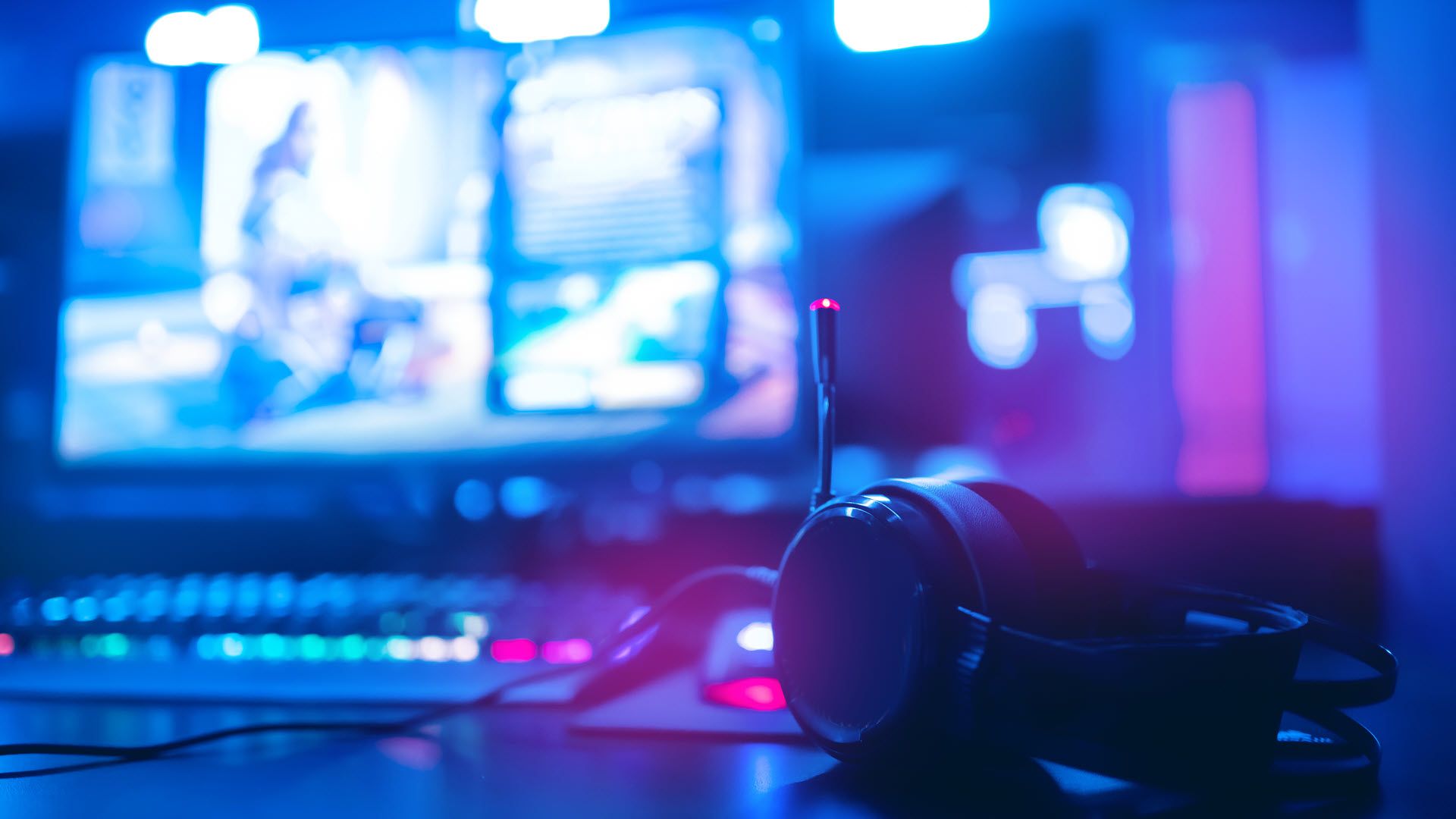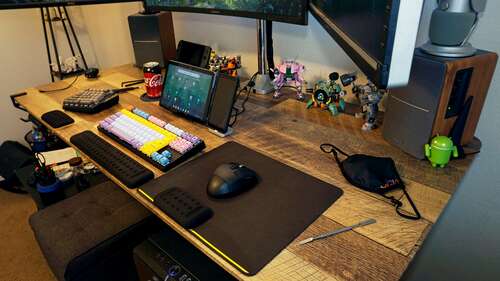Key Takeaways
- Peripherals like monitors and sound systems are just as important as the internal hardware for an optimal gaming experience.
- Consider factors like HDR support and visual quality when choosing a gaming monitor, rather than just focusing on refresh rates.
- Invest in quality keyboards and mice that won’t hinder your performance, as your input is crucial for staying competitive in games.
Unlike other types of entertainment, gaming requires a “good enough” device to be enjoyed. However, power isn’t the only thing that matters: peripherals, furniture, and even lighting may be the difference between having fun and having a headache.
Have you ever considered everything you need to optimize your setup? We have listed a few aspects to improve your gaming sessions.
But first, let’s be clear: this is not a hardware buying guide. We do have a few articles covering the generals of building a gaming PC, why you don’t need an extremely powerful machine to have fun, and even comparisons between gaming laptops and desktops.
1. Peripherals Shouldn’t Be an Afterthought
Guides like the ones linked above are important because they help you focus your money on hardware that matters to your favorite styles, instead of overspending. Just like balancing is good when purchasing RAM sticks or choosing your CPU and GPU, it also helps when buying peripherals.
And peripherals aren’t something to consider just briefly when checking out. They’re your interface with the gaming experience. What you see and hear from the game is defined by your monitor and sound system as much as by your memory and graphics card.
2. Good Monitors Improve Game Experience
Gamers often go for the monitors with the highest refresh rates, but that’s not the only important metric. Depending on your favorite genres, this number may even not matter much.
It’s not that smooth animations aren’t great. It’s just that, unless you have a top-shelf GPU, you won’t be getting 3-digit frames per second (FPS) in many games if you go for the newer titles. So, why not consider other factors that improve the visual experience?
Getting a good gaming monitor with HDR support will give you a much more impressive quality jump than going from 120 to 240 Hz. And the competitive advantage might be higher, e.g., by being able to view enemies in darker areas.
Also, the monitor quality defines what you’ll see in front of you for the next few years. Therefore, it could be less frustrating to get an average computer that shows amazing images than a faster one with a poor screen.
3. Keyboards and Mice Matter to Performance
Similarly, even if you’re running your favorite shooter at 4K resolution and 120 FPS, if your keyboard keeps ghosting or your mouse double-clicks frequently, you won’t be getting the MVP badge anytime soon. Your input is important to stay competitive, so neglecting these devices is not a good idea.
You don’t need to get the most expensive keyboard out there, but, if you want to do some decent gaming, buy a good mechanical one. Going for a TKL model instead of a full-sized one may also save you a few bucks if you don’t need the number pad. If you’re not sure what to look for in a keyboard for your favorite game genre, be sure to check our in-depth buying guide.
There’s no magic recipe to choose the best gaming mouse, but priorities also vary depending on the game. If you play racing simulators, a model with macro keys is unlikely to help, but those into MOBAs and MMORPGs might find them very useful; real-time strategy games benefit from higher-resolution mice, while first-person shooters work better with a lower DPI. There are also other aspects to look for in a gaming mouse independent of genre, like the size of your hands and your grip style.
4. Headsets Are the Difference You Can Hear
Audio gadgets also matter a lot. Spatial audio (or, at least, good stereo gaming headsets) helps you know where enemies are coming from, in first-person shooters, but the background music on RTS games, or the engine roar on racing titles, also benefit from a decent sound system.
If you like having group calls while playing online with friends, you’ll also need to make yourself heard. Microphones, either standalone or the ones on headsets, are an important addition.
5. Gaming Furniture Isn’t (Always) Superfluous
Sure, nobody exactly needs a chair with 18 position adjustments or a desk with dozens of slots to store different mice, keyboards, and whatnot. If you’re a pro-streamer those may add some welcome flair to your scenario, but most people won’t benefit from stuff that fancy. That doesn’t mean you shouldn’t take your gaming furniture seriously.
For the most part, a gaming desk shouldn’t be very distinct from a non-gaming one. Perhaps you might need to ensure it supports the added weight of all your gadgets, but, to be fair, any standing desk will do the job just fine. Models with cable management add-ons fare better at it, but for stuff like RGB LED strips, there isn’t any noticeable difference.
If you don’t want to invest in a completely new desk, getting a keyboard tray might give the needed facelift—and add a few points on ergonomics. You will need, however, to consider the additional work required to properly install an aftermarket tray correctly.
Gaming chairs, on the other hand, are very different from their office-oriented counterparts. That’s both in visuals and in features, but it doesn’t mean you should go straight to the gamer side without considering your needs.
The differences between a gaming and an office chair—other than the flashy colors—are mainly that the former is more flexible on use cases, usually with a wider range of reclining angles, while the latter focuses on keeping your body in the optimal position to avoid posture-related pains on your back, neck, legs, and arms.
If you’re looking for a setup that provides comfort for long gaming sessions but looks professional enough in online meetings, any of the best office chairs will be a great fit. If your gaming setup is built solely for leisure, and you’re not planning on doing any work on that computer, a good gaming chair will (literally) have your back.
6. Lighting and Ambiance to Get You in the Mood
If you had your childhood before the 2000s (or, for the younger ones, if you watched Stranger Things), you might remember arcades were never known as well-lit places. That’s by design: dim environments help a lot with the gaming mood—pretty much like movie theaters, for that matter.
Bias Lighting Reduces Eye Strain
For starters, let’s talk about bias lighting or backlight. All the best gaming monitors have it, and this is an easy way to get this part done.
If your screen doesn’t come with its own assortment of RGB LEDs, however, fret not: you can still do it yourself. I, for instance, use an array of yellowish-white LEDs glued to the wall behind my monitor. Any hardware store these days has RGB light strips for sale if you want the “traditional” gaming decor.
Ambient Lighting and RGB LEDs
But there is also the rest of the room. Good lighting is an important part of any gaming setup—otherwise, there wouldn’t be RGB LEDs in gaming gear: desktops, keyboards, mice, headsets, cooling fans… Well, you get my point.
However, it’s not just slapping a strip of blinking lights and being done with it. Well, low-end gaming peripherals do precisely that, but that’s part of why they are low-end. Lighting should be designed to enhance the gaming experience.
That’s why many gaming peripherals have companion software for their devices, usually with RGB configuration. It does help if your devices are all from the same maker, so you can sync the lighting, but with some work, it’s doable even when mixing manufacturers.
Then comes the room itself. Indirect lighting is always the best bet (but that doesn’t mean you shouldn’t have a traditional light bulb for when you’re not playing), and (fixed-color) LED strips may also help here. Or, you could just ditch the lighting completely.
Complete With a Good Decor
This part seems harder than it actually is. For instance, when doing reviews, most of the time I take photos of the products in my working desk. To add a bit of flair, I have the boxes of my gadgets, present and past, that I use in the background. Nowadays, that setup stays permanently at my desk not just for the reviews, but because it fits well with the room.
Surely, you don’t have to do this using boxes. Do you have Funko Pops lying around? Why not gather them around your gaming desk? Add some game and/or movie posters, and you’re decently set up with minimum effort. If you have the cash available, but not much stuff at hand, we have a buying guide for geeky gear that might help.
If you’re giving a shot at gameplay streaming, your audience will benefit from the ambiance, too. But remember to have a good capture card for the games, and consider upgrading your webcam so they can actually see the scenario.
7. Don’t Forget the Environmental Comfort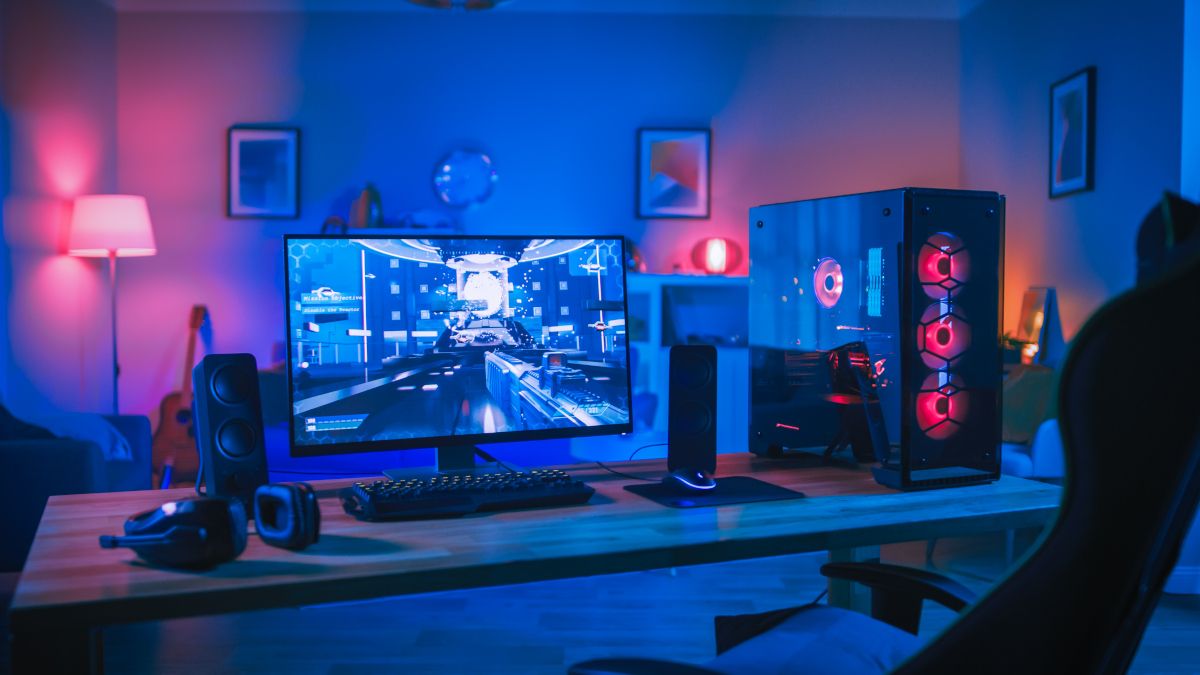
If you saved money for a great gaming setup, you don’t want the fun going away because the room’s just too hot (or too cold). Make sure you have at least some airflow to take the heat away, whether it’s AC or a fan. If winter is severe where you live, you don’t forego the heater in any other room, so why should the one where you play be any different?
PC Gaming Is More Than Just the PC
Just because you’re doing something for fun, it doesn’t mean you shouldn’t do it right. But you also don’t need to overthink your gaming setup. Remember: balance is key, so there’s no need to spend money on stuff you won’t really benefit from, and it doesn’t matter if you’re playing for fun or professionally.
However, many of the tips above provide significant quality-of-life improvements. While individually, they may not make much of a difference, putting it all together could mean you make much more out of your gaming sessions than before.
